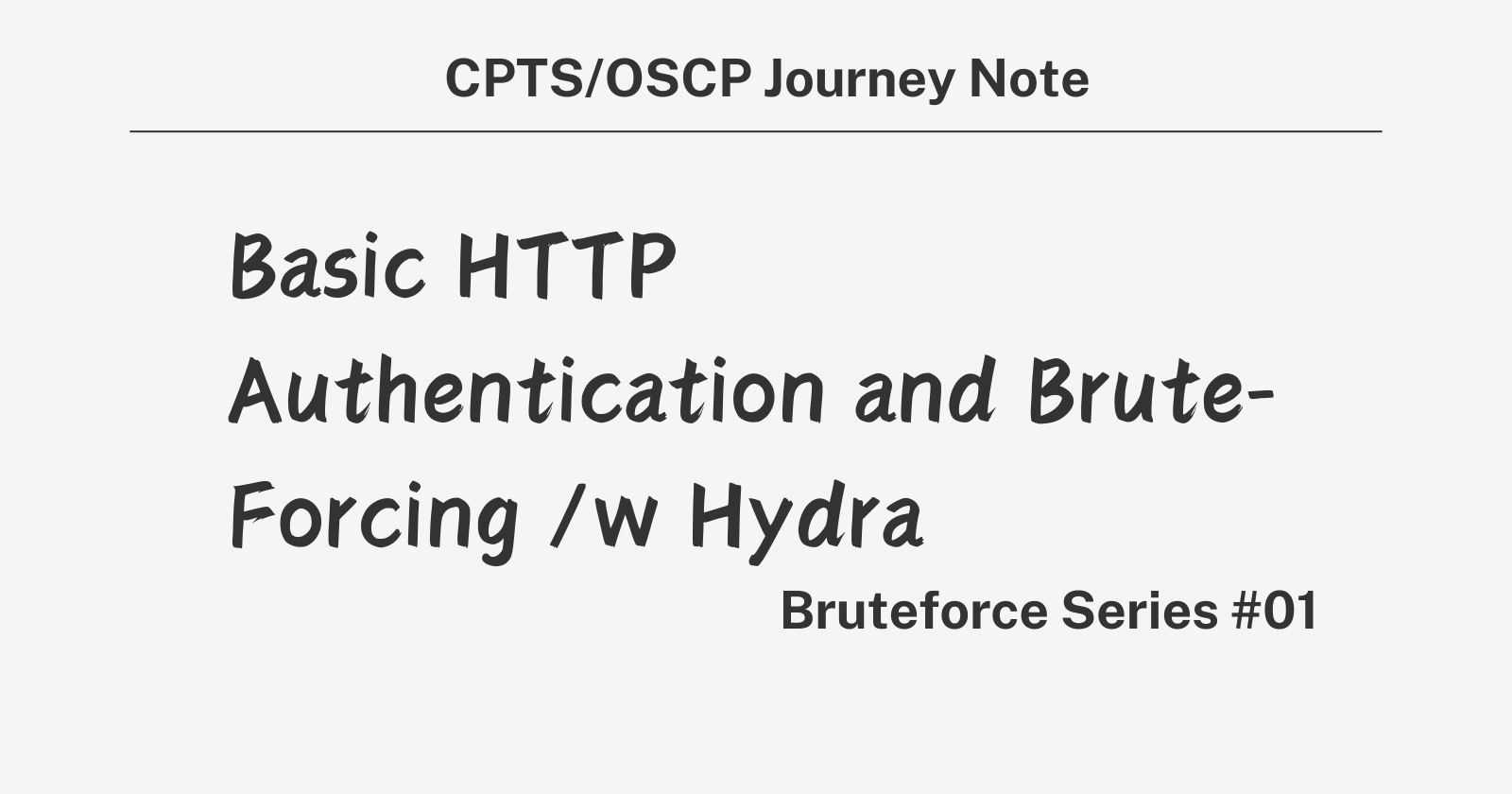Brute-Force Series - Basic HTTP Authentication and Brute-Forcing /w Hydra - 01
 0xiN
0xiN
A. Basic HTTP Authentication Scheme
Concept: It’s a method for an HTTP server to request authentication from a client, using a username and password. The credentials are sent in headers, encoded with Base64.
Process:
The client sends a request without authentication.
The server responds with a
WWW-Authenticateheader, asking for credentials.The client resends the request with an
Authorizationheader containing encoded credentials.
Step-by-Step Guide to Using Hydra for Brute-Forcing
Setting Up Hydra
Installation: On most Linux distributions, Hydra can be installed via package managers (
apt,yum, etc.). It’s also pre-installed on Pwnbox.- Command:
sudo apt install hydra -y
- Command:
Understanding Hydra's Syntax and Options:
- Use
hydra -hto view all options and flags. Key flags includelfor specifying a single login,Lfor a list of logins,pfor a single password,Pfor a list of passwords, andCfor a file with login:password pairs.
- Use
Conducting a Brute Force Attack
Choosing Targets and Credentials:
Identify the web service and port you’re targeting.
Decide whether to use single credentials (
landp), lists (LandP), or combined credentials (C).
Preparation:
Gather or create wordlists for usernames and passwords. SecLists is a valuable resource for finding such lists.
Command Example:
hydra -C /path/to/credentials.txt SERVER_IP -s PORT http-get /
Executing the Attack:
Assemble your Hydra command based on your target and chosen method.
Example:
hydra -C /opt/useful/SecLists/Passwords/Default-Credentials/ftp-betterdefaultpasslist.txt 178.211.23.155 -s 31099 http-get /This command attempts to log in using a list of default credentials against a web server running on a non-standard port.
Visualize the Hydra Attack
Attacking target:94.237.54.170:56220
hydra -C /opt/useful/SecLists/Passwords/Default-Credentials/ftp-betterdefaultpasslist.txt 94.237.54.170 -s 56220 http-get
1. Preparation Phase
Hydra Initialization: Hydra starts up and reads the command-line arguments you've provided.
Wordlist Loading: Hydra loads the combined username:password pairs from the file located at
/opt/useful/SecLists/Passwords/Default-Credentials/ftp-betterdefaultpasslist.txt. Each line in this file likely contains a username and password separated by a colon (:), representing a set of credentials to test.2. Configuration Phase
Target Specification: You've specified the target's IP address as
94.237.54.170, directing Hydra where to send the authentication attempts.Port Specification: With
s 56220, you're instructing Hydra to direct its attempts to port56220on the target machine, suggesting that the web service you're targeting is hosted on a non-standard port.Service Module Selection: By including
http-getin the command, you're telling Hydra to use the HTTP GET method for the attack. This means Hydra will craft HTTP GET requests for each username:password pair, attempting to authenticate against a resource on the server.3. Execution Phase
Request Sending: For each username:password pair in the wordlist, Hydra sends an HTTP GET request to
http://94.237.54.170:56220. The authentication credentials are encoded (typically in Base64 when Basic Authentication is used) and included in the HTTPAuthorizationheader of each request.Response Analysis: The server responds to each request. If the credentials are incorrect, the server typically responds with a
401 Unauthorizedstatus code. For correct credentials, the server's response varies but will not include a401status.4. Result Handling
Success Detection: Hydra checks the response from the server for each request. When it detects a response that implies successful authentication (not a
401), it considers the credentials that generated this response to be valid.Logging: Upon finding a valid username:password pair, Hydra logs the successful credentials. Depending on the command-line flags, it might stop the attack or continue testing other pairs.
5. Post-Execution
Report: After completing the process or finding a valid credential set, Hydra provides a summary of the attack outcomes, including any successfully authenticated credentials.
Cleanup: Hydra concludes its operation, freeing up any resources it used during the attack process.
Checkpoint Exercise
Task: Use Hydra to conduct a brute force attack on a test web server you have permission to test. Start with default credential pairs and then try separate wordlists for usernames and passwords.
Verification: Confirm any found credentials by accessing the web service directly.
Subscribe to my newsletter
Read articles from 0xiN directly inside your inbox. Subscribe to the newsletter, and don't miss out.
Written by
